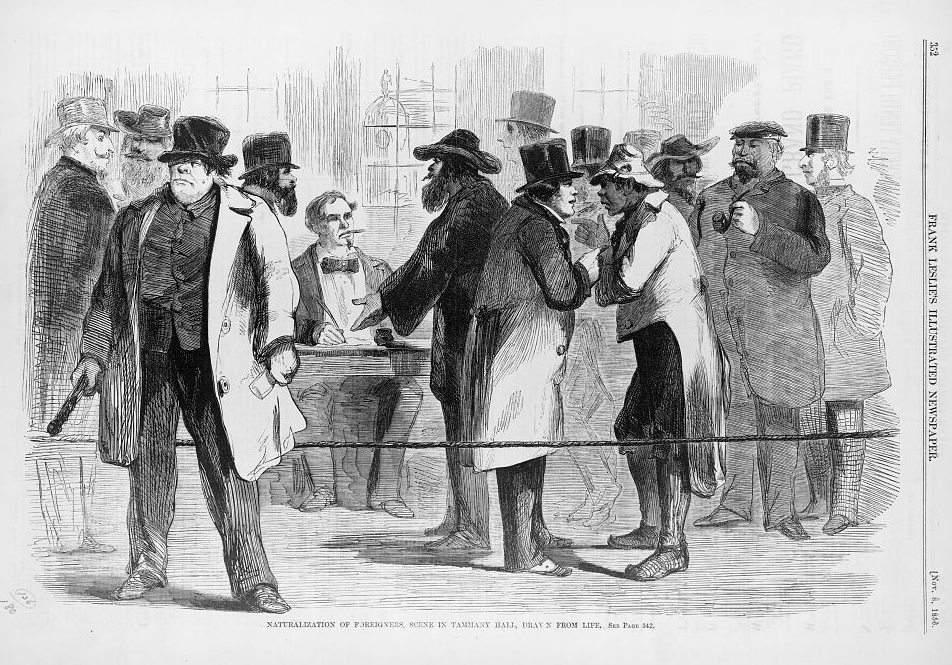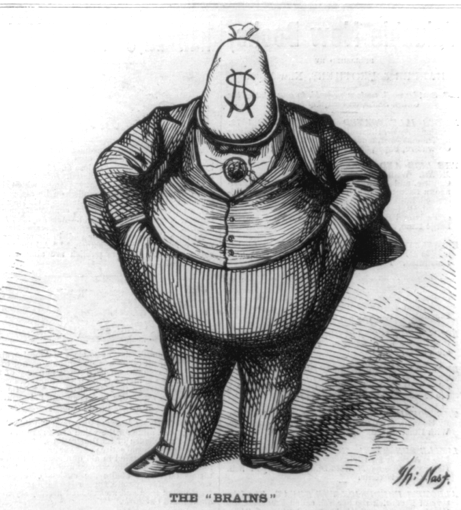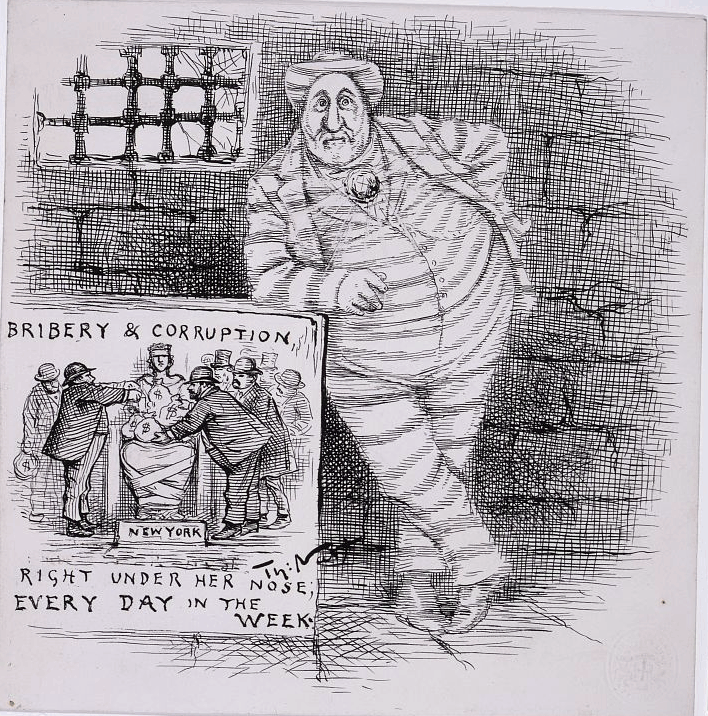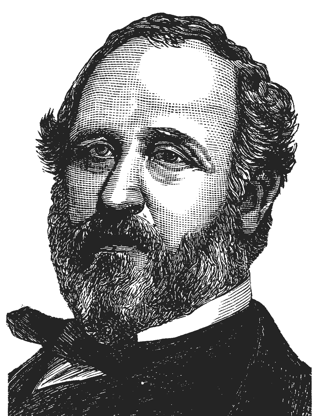|
Big city political machines and Boss Tweed Political machines were organized groups of dishonest politicians who had two main goals:
|
 |
| Big City
Political
Machines Frameworks for America's Past |
|
|
Big city political machines and Boss Tweed Political machines were organized groups of dishonest politicians who had two main goals:
|
 |
|
How
they won elections
To win elections, a political machine depended mainly on the votes of the immigrants pouring into America's cities. The organization would have supporters in all the city's neighborhoods. They would meet new immigrants and give them help of various kinds, such as help finding a job or a place to live. On election day, the machine's supporters would make sure the immigrants knew who to vote for to return the favor. The drawing in the newspaper below shows Boss Tweed's political machine signing up a group of immigrants just before an election. At times, political machines used fraud to win elections. For example, supporters of the organization could be sent out to vote multiple times in different neighborhoods using different names at each voting place. |

|
How city bosses got rich Once in control of the city's top elected offices, a city boss had many ways of making money. He could demand bribes from businesses that wanted to get city contracts for jobs like paving city streets, for example. In the case of Boss Tweed, he and his top associates also stole millions of dollars right from the city's own bank accounts. One famous example of Boss Tweed's demands for bribes is the Brooklyn Bridge in New York City. When a group of people who wanted to build the bridge needed approval from city officials, Tweed demanded a large bribe to make it happen. Tweed also demanded that he be made a part owner of the bridge company itself. The bribe money was paid, Tweed was made a part owner of the company, and the approval was given. |
 |
|
Arrested,
convicted, and jailed
Tweed was finally exposed for his crimes by newspaper reporters. He was first arrested in 1871. He was later convicted, and died in jail in 1878. The famous political cartoon below shows the ghost of Boss Tweed still haunting his jail cell years later. Notice the sign in the cartoon saying that bribery and corruption (dishonest government) were still common in New York even with Boss Tweed dead and gone. |

|
But. . .
political
machines
did some good things! Boss Tweed and his political machine, known as Tammany Hall, did some good things for New York City. He pushed for real improvements to the city's schools, hospitals, roads, and the city water system. Supporters of the organization made it a point to give help to the immigrants and other poor people of the city. That help, no matter how small, would be remembered for a long time. When Tweed died, thousands of New Yorkers attended his funeral. Even after Boss Tweed was gone, the Tammany Hall political machine remained a part of New York City life and elections until the 1930s. |
 |
|
Copyright Notice
Copyright 2009, 2012 by David Burns. All rights reserved. As a guide to the Virginia Standards of Learning, some pages necessarily include phrases or sentences from that document, which is available online from the Virginia Department of Education. The author's copyright extends to the original text and graphics, unique design and layout, and related material. |